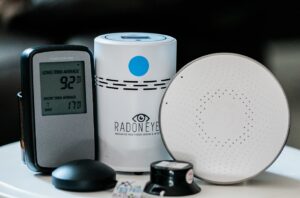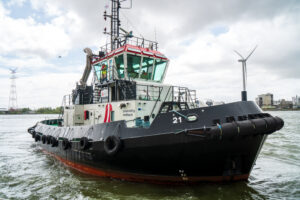Which European cities have the best air quality?
The latest data from the European Environment Agency (EEA) reveals which cities in Europe have the cleanest air.
Between 2020 and 2021, Umeå in Sweden and Faro and Funchal in Portugal were the cleanest cities according to the EEA.
The data comes from the European city air quality viewer, which includes over 340 cities ranked from the cleanest to the most polluted based on average levels of fine particulate matter (PM2.5).

In the same period, air quality was good in only 11 cities – meaning that levels of PM2.5 were below the World Health Organization’s (WHO) health-based guideline for long-term exposure to PM2.5 of 5 micrograms per cubic meter of air (5 μg/m3).
The guideline was exceeded in 97% of the 343 European cities included in the viewer.
In contrast, the European Union’s (EU) annual limit value for PM2.5 of 25 µg/m3 was only exceeded in the three most polluted cities, including Nowy Sacz, Poland, and Cremona and Padova in Italy, highlighting the difference between the WHO guideline and the EU standard.
The European city air viewer can be used to check how the air quality was in European cities over the past two years. The viewer focuses on long-term concentrations of PM2.5, as long-term exposure to air pollution causes the most serious health effects, and PM2.5 is the air pollutant with the highest impact on health in terms of premature death and disease.
Under the National Emission reduction Commitments (NEC) directive, EU Member States are required to meet national commitments to reduce emissions for five air pollutants. In 2020, a transition took place to a new, more ambitious set of national emission reduction commitments.
In 2020, just under half of Member States met all their national emission reduction commitments, according to a recent annual EEA report.
Based on the analysis of the data provided by Member States and not yet fully checked by the Commission, the report found that the biggest challenge remains reducing emissions of ammonia from agriculture, with 11 Member States needing to cut their emissions levels.
Only 13 Member States met their commitments for each of the five main pollutants (nitrogen oxides, non-methane volatile organic compounds, ammonia, sulphur dioxide and PM2.5).
Fourteen Member States failed to meet their emission reduction commitments for at least one of the five main air pollutants.
The EEA analysis is based on the latest air pollutant emission inventory data, as reported by Member States in February 2022. It constituted the first opportunity to assess emission reduction performance against the 2020-29 emission reduction commitments.
Photo by KOBU Agency















Must depend on where, when and what they measure? I bet some of the supposedly good air cities are not as clean as they might wish. If the monotoring site is somewhere breezy or on the edge of the city that will not tell you about the air quality in the busier parts. Wouldn’t Funcal (Madeira) get polluted by the cruise ships? Someone on the Madeira Island NewBlog wrote in May this year ‘for over an hour yesterday afternoon whilst preparing to sail, the MSC Virtuosa was filling the air over Funchal harbour and the city with engine smoke and it continued long after she’d sailed’ – apparently the same ship (and others very likely) often pollute harbours in Spain and UK too. So while saying a particular city has bad air is probably ture, saying a palce has very good air might be a misleading generalisation. The article here does say long-term PM2.5 which is perhaps fair enough but those cruise ships all summer? Does that just get recorded as something short-term and hence negligible? Would be the same with idling engines in London? Or rush hour traffic? Taking 24 hr averages includes night time when air pollution probably drops. Taking yearly averages won’t tell you (enough) about very local pollution spikes and summer or winter highs. Continuous monitoring where you live or where you work or where your chidlren go to school tells you far more.